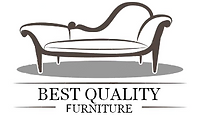When it comes to furnishing your living room, one piece that stands out as a centerpiece of style and functionality is the coffee table. Over the years, coffee tables have become an essential element of interior design, adding a touch of elegance and practicality to any space. In this article, we will delve into the world of coffee tables, exploring their history, diverse styles, and how they can elevate the overall ambiance of your living area.

A Brief History
The origins of coffee tables can be traced back to the Victorian era in the late 19th century. Initially known as tea tables, they were low and narrow, designed to hold tea cups, plates, and other tea-related paraphernalia. As the popularity of coffee grew, tea tables gradually transformed into coffee tables. Their dimensions expanded to accommodate larger coffee sets and magazines, making them more suitable for social gatherings.
Evolution of Styles
Over time, coffee tables have evolved in design, incorporating various materials, shapes, and sizes to cater to diverse interior preferences. Let’s explore some of the popular coffee table styles available today:
- Classic and Traditional: These coffee tables feature timeless designs, often made from solid wood, with intricate detailing and carvings. They exude a sense of elegance and craftsmanship, perfect for creating a sophisticated and refined atmosphere.
- Modern and Minimalistic: Sleek and clean lines characterize modern coffee tables. Often constructed with metal or glass, they offer a contemporary look and feel. These tables are ideal for minimalist interiors, adding a touch of simplicity and functionality.
- Rustic and Industrial: If you crave a touch of vintage charm, rustic and industrial coffee tables are the way to go. Crafted from reclaimed wood or metal, these tables showcase natural imperfections and provide a rugged appeal, creating a warm and inviting ambiance.
- Scandinavian and Mid-Century: Inspired by Nordic design principles and the mid-20th-century aesthetic, Scandinavian and mid-century coffee tables feature clean lines, organic shapes, and a blend of natural and modern materials. They offer a balance between functionality and stylish simplicity.

Functionality at its Finest
Apart from their aesthetic appeal, coffee tables serve various practical purposes. Here are a few ways they enhance the functionality of your living area:
- Center of Attention: Positioned in the heart of your living room, the coffee table serves as a focal point, drawing attention and anchoring the space. It provides a surface to display decorative items like books, vases, or sculptures, reflecting your personal taste and style.
- Versatile Storage: Many coffee tables come with built-in storage options, such as drawers, shelves, or hidden compartments. These additions allow you to keep remote controls, magazines, or other essentials within arm’s reach, minimizing clutter and maintaining a tidy space.
- Entertainment Hub: Coffee tables also serve as a convenient platform for hosting social gatherings. From serving snacks and drinks to playing board games or card games, they create a comfortable and functional area for entertaining family and friends.
- Multifunctional Space: With the right design and size, coffee tables can be transformed into versatile pieces of furniture. They can double as a desk for working from home, a dining table for casual meals, or even a footrest for relaxation.

Choosing the Perfect Coffee Table
When selecting a coffee table for your living room, consider the following factors:
- Size and Proportions: Ensure the coffee table fits well within the available space without overwhelming or crowding the room. Aim for a size that complements your seating arrangement, leaving enough room for movement.
- Material and Durability: Select a material that aligns with your style preference and matches the overall decor. Consider factors such as durability, maintenance requirements, and how well the material will withstand everyday use.
- Shape and Style: Choose a shape that harmonizes with your existing furniture and the overall design theme. Round or oval coffee tables soften sharp edges, while rectangular or square tables provide a more structured look.
- Functionality and Storage: Assess your storage needs and opt for a coffee table that offers the desired level of functionality. Decide whether you require additional storage options or prefer a minimalist design.

Coffee tables have come a long way from their humble beginnings as tea tables. They have evolved into versatile furniture pieces that enhance the style and functionality of your living space. Whether you prefer a classic, modern, rustic, or Scandinavian style, there is a coffee table out there to suit your taste and needs. So, go ahead and explore the world of coffee tables to find the perfect centerpiece for your living room, allowing you to express your personal style while creating a cozy and inviting atmosphere.
